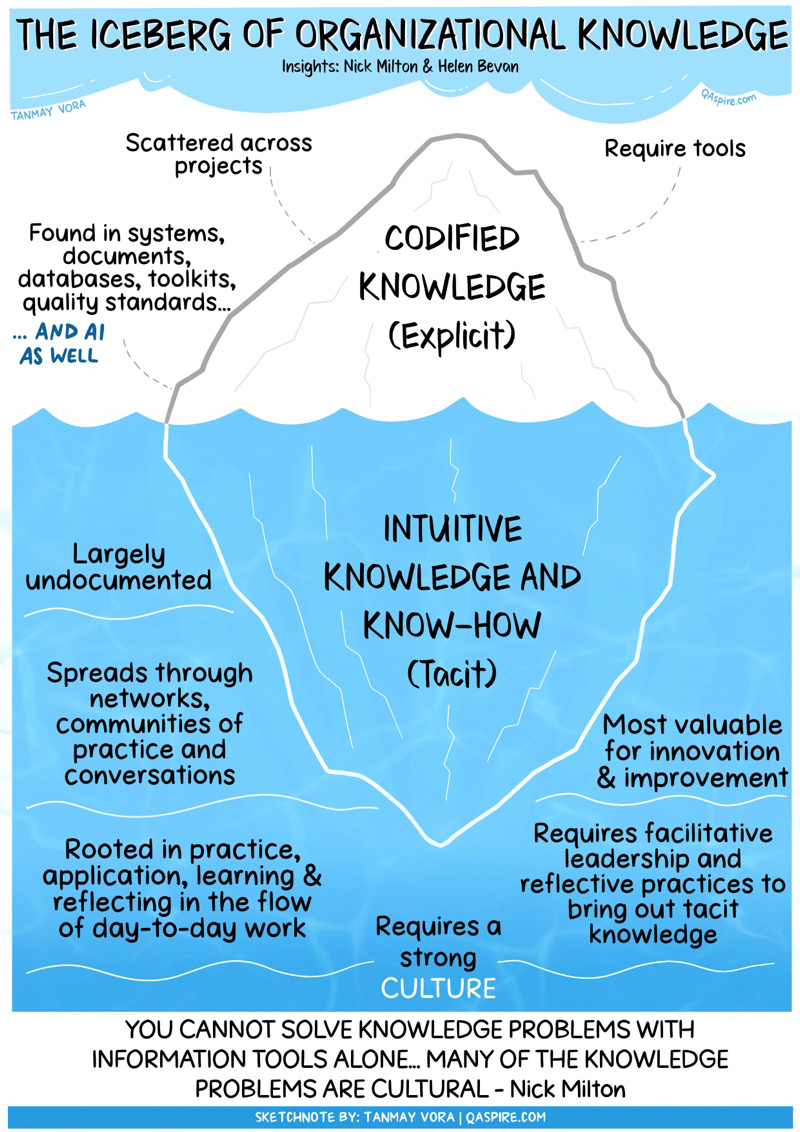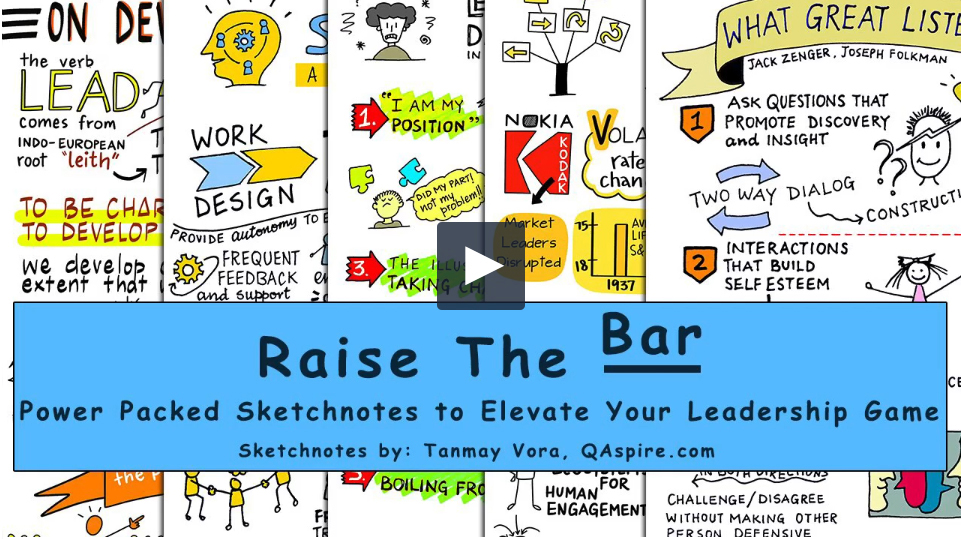The Iceberg of Organizational Knowledge: How to Unlock Tacit Knowledge
Organizations that can tap into tacit knowledge of people can raise the bar and innovate. This post offers ideas to unlock tacit knowledge within organization through human centered leadership.
Tanmay Vora
Knowledge in organizations flows “across” people and teams. Real knowledge resides in the network of people and its interactions.
Everything that is found in documents, systems, process flows and tool kits is “explicit” knowledge that is useful to sustain the business and keep the “status quo”. That is the tip of the iceberg – visible and accessible. In fact, most of the content that AI repurposes from online resources is explicit knowledge.
The hidden treasure of organizational knowledge is tacit knowledge that is deeply rooted in people, their experiences, skills, insights and judgements. Tacit knowledge doesn’t come to the fore easily because it resides in the minds of people. How to react to a specific situation? How to connect seemingly discrete dots? That’s all tacit and invaluable at the same time. Unlocking tacit knowledge is how organizations break past their internal barriers to improve and innovate.
Another key thing about tacit knowledge is that it is ever evolving. We learn through experience to gain tacit knowledge and when we document/codify it, it turns into explicit knowledge which spreads through sharing. The key is to constantly build connections between our understanding from different disciplines and gain new tacit knowledge (nuanced understanding) through experience.
The Key to Unlock Tacit Knowledge
It starts with leadership commitment. When leaders across the board focus on cultivating the mindset of learning together, tacit knowledge precipitates through conversations. During my 6 years tenure as an organizational leader, I had reasonable success in building a culture of constant learning starting from one to one interactions, functional practices to cross-team learning forums. It was a long and arduous journey that led our R&D teams to build and support a truly world-class product that ranked amongst top 3 in the Gartner Magic Quadrant consistently over the years. Developing people and seeing them grow was even more gratifying.
In my experience, building such a culture requires leaders to:
- Actively focus on building trust and collaboration
- Build collective learning rituals within and across teams enabling people to look back (retrospection) and look forward (ideation)
- Ask open ended questions that elicits deeper understanding and organic exchange of tacit knowledge
- Build a conducive and psychologically safe culture where people feel comfortable opening up with their ideas and insights, and learn from successes as well as failures.
- Build reflective and retrospective practices to enable continuous learning in the flow of work
- Invest in systems like enterprize social network where conversations can happen
- Create internal coaching and mentoring programs to guide (and be guided) through personalized interactions
- Create communities of practice for knowledge sharing and mutual learning
- Codify and plough back lessons into organizational knowledge databases, processes and toolkits.
- Truly invest in learning and development initiatives exposing people to newer ideas from within and outside the organization enabling people to blend their experiences with needs of the new context.
- Position constant learning as a journey rather than “training as an event”
A facilitative mindset is about understanding that the real knowledge of organisation is in collective intelligence. A facilitative leader creates conversational spaces, remains curious about what people learn and bring that knowledge into improvements and innovative ideas. Such a mindset enables people to exercise their choice of sharing and contributing.
Being facilitative is about stepping aside, even if a few hours each week, from operational stuff and focus on conversations leading to learning. Building such a culture ultimately boils down to “commitment”. In this context, Microsoft’s story of embracing growth mindset, inclusivity and building a “learn-it-all” culture is very inspiring.
Embracing a facilitative mindset of leadership unlocks the untapped potential of tacit knowledge while empowering people/teams to thrive in an ever-evolving world.
As Nick Milton says in his wonderful post, “You cannot solve knowledge problems with information tools alone.” (Hat Tip to Helen Bevan for sharing Nick’s post)

Updated: Visual Leadership Pack HD Sketchnotes
If you liked the sketchnote summary above, check out the Visual Leadership Pack of HD Sketchnotes – a compilation of high-resolution sketchnotes with 90+ powerful (and timeless) ideas to elevate your leadership and learning game.

Buy Now!